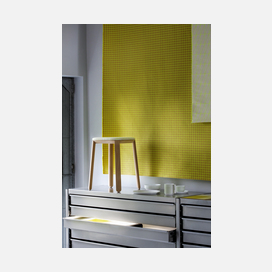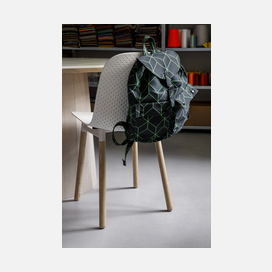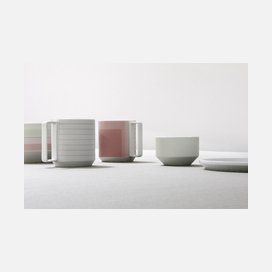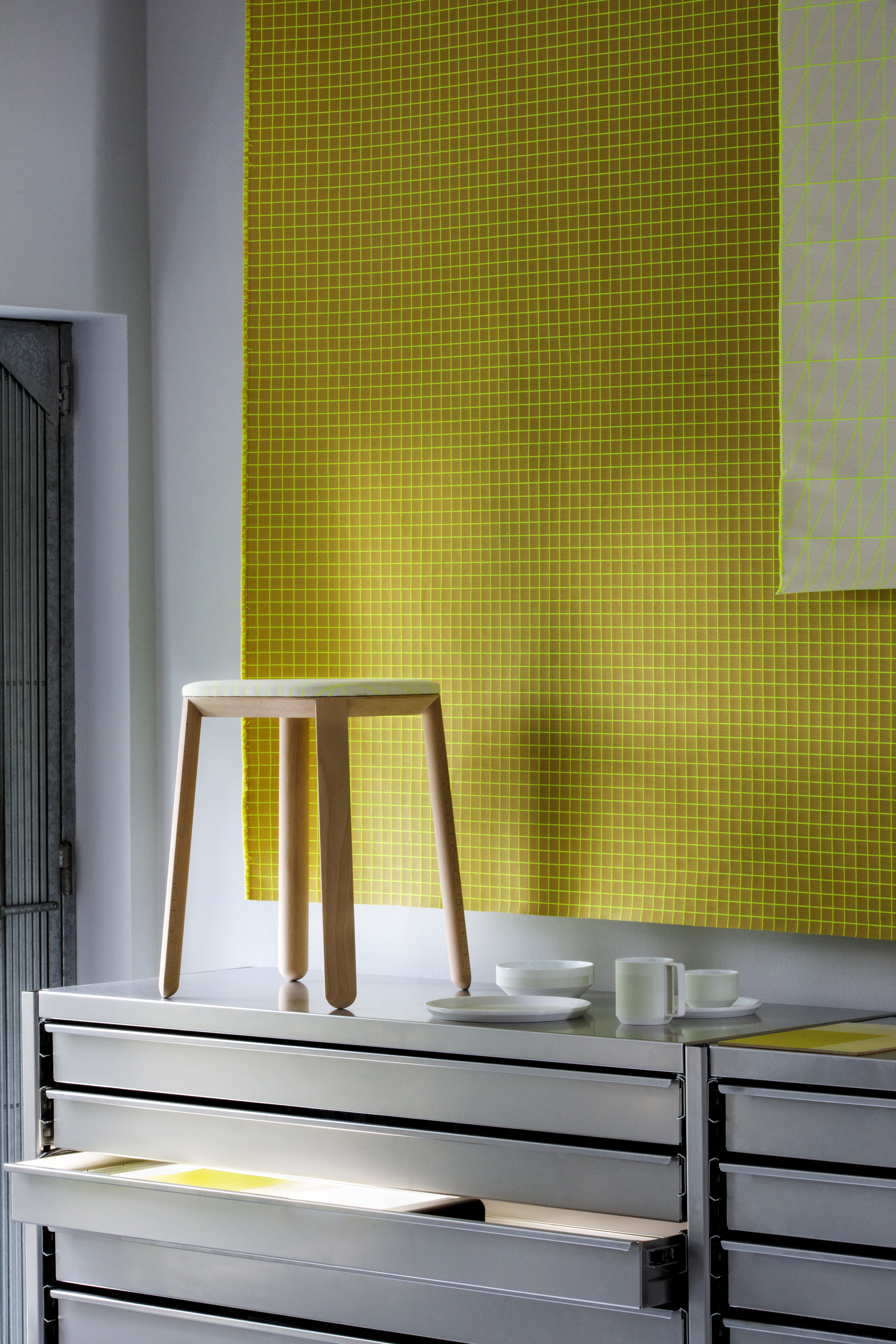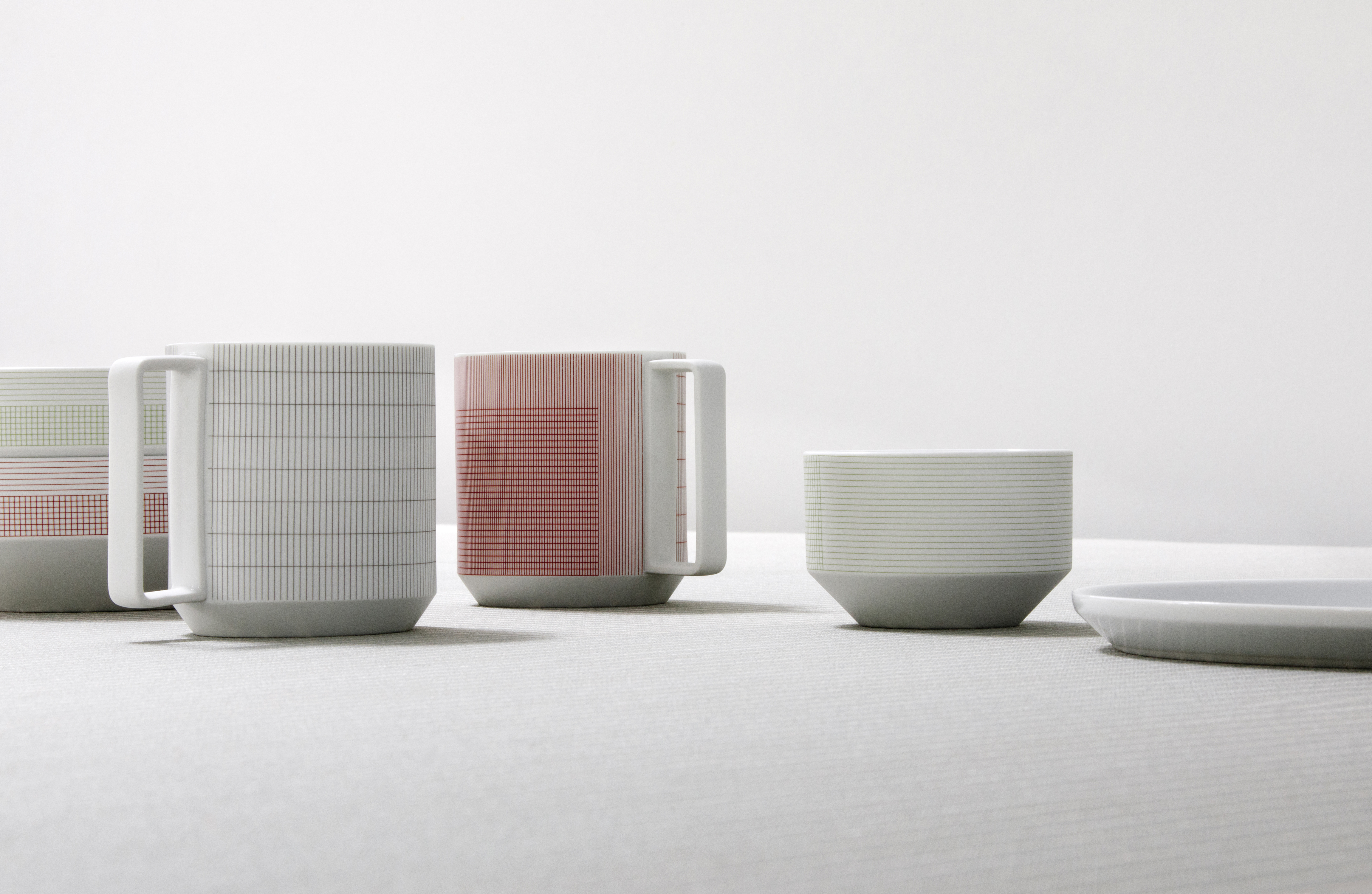Maharam introduces a new collection of accessories developed exclusively for Japan under the creative direction of Scholten & Baijings. Spanning a range of materials and techniques, the initial offering includes original designs developed in collaboration with 1616 / arita japan and Karimoku New Standard, customized Maharam bears, and a series of Porter Yoshida & Co. bags reimagined through Maharam textiles. This assortment joins a robust selection of existing Maharam accessories—bags, pillows and printed material—available globally through Herman Miller Japan and other select retailers.
Combining a rigorous and holistic approach to design with thoughtful details and high-quality execution, Maharam is well suited to the Japanese market. Scholten & Baijings, having collaborated with Maharam since 2014, bring an ability to carefully translate Maharam’s aesthetic vision to Japan, a country in which they’ve worked since 2009. Indeed, “Japanese craft, industry, material or culture” were top of mind as they developed this collection, says Stefan Scholten.
Based in Amsterdam, Scholten & Baijings are known for testing every product they design at home within their own family. According to Carole Baijings, “We want to want the new product we’re designing. If we don’t want to live with it, why would anyone else want to buy it?” This process has the effect of ensuring that their textiles, tableware, furniture, and lighting all work together seamlessly—a benefit that’s seen here.
Encompassing a range of product types, materials, and techniques, the collection is unified by the Dutch duo’s nuanced sense of color, geometric pattern, and minimal form. Maharam textiles—including those by Scholten & Baijings, Charles and Ray Eames, Alexander Girard, Hella Jongerius, and Karel Martens—appear throughout, while several qualities of Maharam leather introduce surface variation and interest.
Geometric simplicity characterizes the five-piece set of porcelain tableware—encompassing a small and large plate, bowl, cup, and mug—seen in circular volumes set atop slightly conical bases. Produced by 1616 / arita japan, the porcelain is embellished with a graphic reinterpretation of Grid, a groundbreaking textile created by Scholten & Baijings in 2014 in collaboration with the New York-based Maharam Design Studio. Over the course of the textile’s unusually long repeat—based on the ten yards typically required to upholster a sofa—Grid investigates color densities built up by parallel and perpendicular lines. In Stefan Scholten’s words, “The density of the grid determines how one experiences color and gives the color a more airy appearance than a monochromatic color plane.” Now at a dramatically reduced scale and with inverted color proportions, Grid enlivens the porcelain pieces in three different color schemes applied with varying matte or gloss effects.
Likewise, three rectangular oak trays are adorned with Blocks, the companion textile to Grid. An exploration of color perception, Blocks features subtle colors lightly juxtaposed or overlapped to create effects of depth and transparency. Importantly, Scholten & Baijings meticulously designed the original pattern to work in sections as well as in its entirety. As Stefan Scholten explains, “a nine-meter piece of fabric that shows the whole repeat has to be just as interesting as a single meter of fabric.” Their success in overcoming this design problem is apparent here. While retaining the original textile colorations, this printed application of the pattern uses composition and cropping to render each of three available sizes unique.
Karimoku New Standard is the manufacturing partner for the Covered Stool. With a slender profile and stackable frame, the stool is topped with an upholstered seat fashioned from the fluorescent geometry of Bright Cube, the solid wool of Pare, or the stitched grid of Tracery—all designed by Scholten & Baijings in collaboration with Maharam—as well as the iconic Small Dot Pattern designed in 1947 by Charles and Ray Eames, all with complementarily colored, tinted beechwood bases—an effect Scholten & Baijings had not previously explored with Karimoku New Standard. Hella Jongerius’s embroidered textile, Borders, which combines several different archetypal motifs, is an exception in that it’s paired with a natural beechwood base.
In addition to the creation of original designs, Scholten & Baijings also oversaw the curation of a limited-edition collection of Porter Yoshida & Co. bags. Textiles by Scholten & Baijings (Bright Cube, Bright Grid, Mesh, and Tracery), Charles and Ray Eames (Dot Pattern and Small Dot Pattern), Alexander Girard (Arabesque), Hella Jongerius (Vases), and Karel Martens (Trio) transform assorted utilitarian shapes: from a dopp kit, laptop case and backpack to shoulder-, waist-, and tote bags. United by a dark palette, the textiles are attuned to geometric form, from Karel Martens’s overprinted circles to Hella Jongerius’s colorblocked vases.
Finally, Scholten & Baijings have created a new prototypical iteration of the Maharam Bear. Originally conceived for the Fall/Winter 2016 issue of PIN–UP—an independently published, biannual American magazine for architectural entertainment—the Bear has been modified through the addition of eyes for enhanced personality. In addition to Bright Grid by Scholten & Baijings and Small Dot Pattern by Charles and Ray Eames, the bear is offered in Maharam leathers Hue and Loam.
The collection will debut at Herman Miller Japan’s flagship store in Tokyo in late October and will be shown alongside “Chromatography: The Colour World of Scholten & Baijings”, an immersive installation of textiles and furniture that includes the ColourForm Sofa Group, designed by Scholten & Baijings for Herman Miller. The Pattern Porcelain collection will be available for sale as of October 26, while the Cover Stool and Porter x Maharam collection are slated for March. Other product introductions will follow.
About 1616 / arita japan
1616 / arita japan produces contemporary porcelain that can be used every day, while offering the extraordinary workmanship, thinness, and strength of original Arita ware. Located in southern Japan, Arita has been the epicenter of porcelain production since its introduction to Japan in 1616 and is synonymous with Aritayaki, a type of pottery made using clay from crushed stone. Items are produced at the same factories, but with a wholly contemporary design aesthetic under the creative direction of Teruhiro Yanagihara. While focused on the Standard series, he invited Scholten & Baijings to develop their own line named Colour Porcelain. Both contributions shed new light on the Japanese porcelain tradition by fusing expert craftsmanship with contemporary design.
About Karimoku New Standard
Karimoku New Standard is a division of Karimoku, a furniture manufacturer based in central Japan with more than seventy years of history. Combining a deep understanding of carpentry craftsmanship with cutting-edge technologies, Karimoku builds furniture of the highest possible quality. Introduced in 2009, Karimoku New Standard offers innovative, joyful, and functional objects created under the direction of David Glaettli in collaboration with the world’s most promising design talents.
About Porter Yoshida & Co.
Porter Yoshida & Co. is a Japanese accessories company founded by Kichizo Yoshida in 1935. Renowned for making functional bags of the highest quality, each minimal, utilitarian design is produced exclusively in Japan by skilled craftspeople from beginning to end. Porter, Yoshida & Co.’s in-house line, was introduced in 1962.
About Scholten & Baijings
Stefan Scholten and Carole Baijings founded the Amsterdam-based Scholten & Baijings, Studio for Design in 2000. Moving fluidly between artisanal and industrial processes, Scholten & Baijings creates products characterized by minimal forms enhanced by simple geometric patterning, a subtle use of materials, and an acute sense of color. Their many clients include 1616 / arita japan, BMW Group/MINI, Established & Sons, Thomas Eyck, HAY, IKEA, Georg Jensen, Sèvres France, Karimoku New Standard, Samsung, and Moroso. Their work, both commissioned and independent, is collected and exhibited worldwide. In addition to four Dutch Design Awards, they were awarded the ELLE Decoration International Design Award (EDIDA) for Young Designer Talent in 2011 and 2014 and have twice been nominated for the Wallpaper* Designer of the Year Award (2011/2015). Reproducing Scholten & Baijings, the first monograph on the studio’s work, was directed by Maharam and published by Phaidon in February 2015. Designed by Joost Grootens, the book received an ADC Annual Award the following year.
